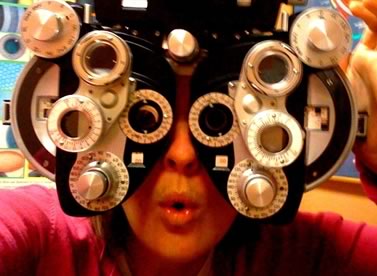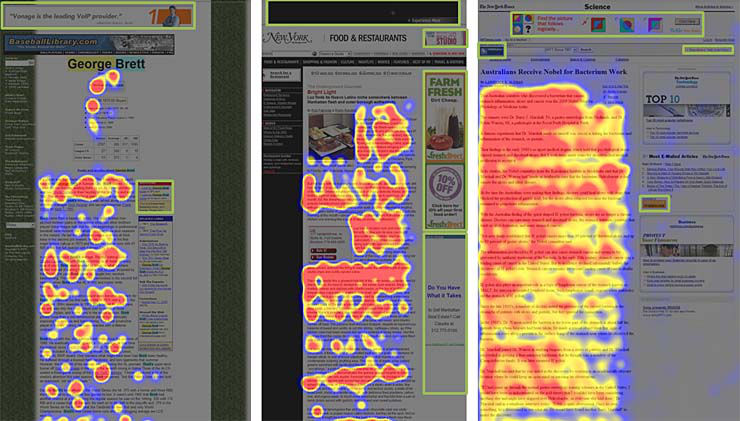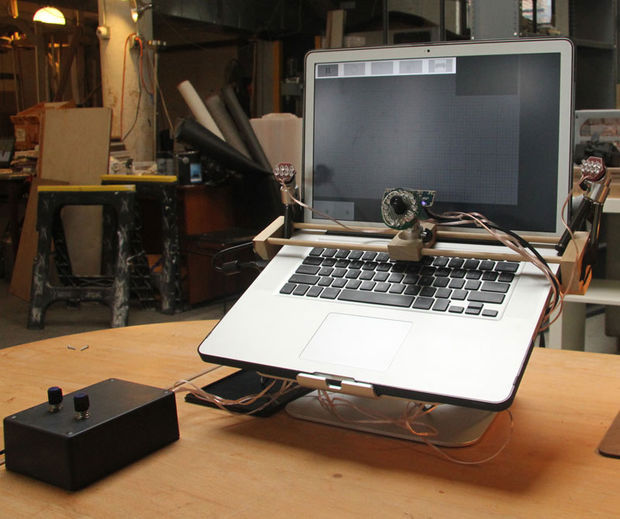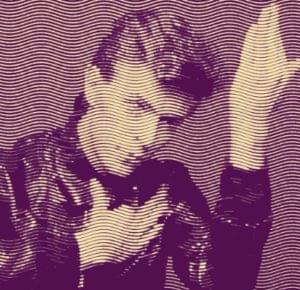
Information overload is becoming an epidemic for web users across the globe. When users visit your website or use your app, you only have a few seconds before users decide to stay or bounce.
Traditional analytics can be useful for getting a macro overview of your site metrics, however when you’re building out a new design or making changes, you need a way to get inside the mind of your users.
Many web development professionals turn to heatmaps and mouse tracking for detailed insights as it’s a relatively simple way to gather insights about your website. For those times you need to take your research to the next level, eyetracking (also known as gaze interaction) is the tool for you.
Eyetracking is Hard. Why Bother?
Complex Projects
Travel websites are a perfect eye tracking use case because of the website complexities. Airfare in particular is a great fit for this tool because customers have an endless amount of possibilities for planning their trip.
As shown by a video from Matchic Labs Eye Tracking, there’s plenty of activity which occurs without the measurable click of a mouse or tap of a screen. If you’re handling a project with a complex interface or situations where users need to process large amounts of information, eye tracking is essential for your success.
E-Commerce
While heatmaps and mouse-tracking are viable solutions for most e-Commerce settings, there are times where companies need to take their research to the next level. As Rick Nguyen, the founder of ad testing firm Spot Trender pointed out in an interview.
While eyetracking be can be more expensive than traditional UX testing methods, like click tracking or mouse tracking, eyetracking can significantly improve your sales. For instance, if you have a site selling hats, you would probably want users to focus on the hat rather than the shirt the model is wearing.
Online Advertising
Advertising is all about invoking an emotional reaction from the viewer. As with eCommerce, eyetracking enables you to to see how users are reacting to your banners or video ads.

Source:Nielsen Norman Group
Bidding on competitive keywords can easily burn a hole in your wallet. Bidding on niche keywords can help to reduce your burn rates, but unless you have data on user reactions, you’ll be following the “spray and pray” method of video production.
Is DIY Eyetracking an Option?
While this technology might seem limited to companies with six figure budgets (the equipment alone can cost $9,000-$20,000 upwards), you can integrate eyetracking into your projects for as little as a couple hundred dollars.
If you’re willing to get your hands dirty, you can always DIY an eyetracking solution for a couple hundred dollars.

To gather insights around your projects, PyGaze is worth exploring. For Python developers, the system should be fairly easy to implement. Be warned that if you aren’t a developer, or if you don’t have one on hand, then this solution isn’t for you. PyGaze is a complex tool which has a low price point (free), however it requires hours to setup.
If you’re looking to immediately get started with eyetracking, Gazepoint offers a variety of solutions to fit a variety of needs.
Best Practices
Determining Your Sample Size
As with any usability testing, you need to ensure that you’re surveying enough users for accurate results. You can figure out a precise amount using the Holm-Bonferroni method, however it’s a bit difficult to grasp unless you’re a statistician. When doing your tests, you should aim for 95% accuracy. If you have a smaller budget or less time for testing, you can get away with as little as 80% accuracy.
If you want to spare yourself from headaches, you can always use a sample size calculator to determine the amount of people you should test.
Don’t Neglect Privacy
As shown by the backlash against surveillance programs, the general public doesn’t like to have their images kept in digital archives for analysis. While getting users to participate in an eyetracking study can be difficult, you can make participation palatable by not storing facial images when possible.
Instead, just store the raw tracking recording and pair it with high level demographic data. Sometimes logging facial images might be necessary, such as for analyzing emotion. In these cases you should be transparent about the information is used and stored.
Not The Holy Grail
Eyetracking can provide essential insights for your projects, however it isn’t a replacement for other testing methods. It also isn’t going to instantly uncover insights you didn’t have before.
Unless you do the tests properly, eyetracking can leave you worse off than using less complex methods. Before performing these tests, you should familiarize yourself with the process. Once that’s done, you should run a few practice tests before using it on live studies.
Remember that you’ll still need to use other research to ensure you’re getting the full perspective on your users experiences.
Frequently Asked Questions on Eye Tracking Technology
What is eye tracking technology and how does it work?
Eye tracking technology is a sensor-based technology that enables a device to know exactly where your eyes are focused. It uses infrared light to track the movement and position of your eyes. This technology is used in various fields such as psychology, marketing, and user interface design. It helps researchers understand where and what people are looking at, which can provide valuable insights into human behavior and preferences.
How is eye tracking technology used in web design?
In web design, eye tracking technology is used to understand how users interact with a website. It provides insights into where users look first when they land on a page, how they navigate through the site, and what elements attract their attention. This information can be used to optimize the layout, design, and content of a website to improve user experience and engagement.
What are the benefits of using eye tracking technology in marketing?
Eye tracking technology provides valuable insights into consumer behavior, which can be used to improve marketing strategies. It can reveal what elements of an advertisement or a webpage draw attention, how long a person looks at certain elements, and what they ignore. This information can be used to create more effective advertisements, improve product placement, and optimize web design to increase conversions and sales.
Can eye tracking technology be used on mobile devices?
Yes, eye tracking technology can be used on mobile devices. It can provide insights into how users interact with mobile apps and websites, which can be used to improve user experience and engagement. However, the use of eye tracking technology on mobile devices requires specialized hardware and software.
What are the limitations of eye tracking technology?
While eye tracking technology provides valuable insights, it also has some limitations. It requires specialized equipment and software, which can be expensive. It also requires the user to be in a controlled environment to ensure accurate results. Additionally, it can only track where the eyes are looking, not what the user is thinking or feeling.
How accurate is eye tracking technology?
The accuracy of eye tracking technology depends on the quality of the equipment and software used. High-quality eye trackers can be very accurate, with an error margin of less than 0.5 degrees. However, the accuracy can be affected by factors such as the user’s distance from the screen and the lighting conditions.
Can eye tracking technology invade privacy?
While eye tracking technology can provide valuable insights, it also raises privacy concerns. It can potentially be used to track a user’s online behavior without their knowledge or consent. Therefore, it’s important for companies to use this technology responsibly and transparently, and to respect user privacy.
What is the future of eye tracking technology?
The future of eye tracking technology looks promising. It’s expected to become more accurate, affordable, and accessible, and to be integrated into more devices and applications. It’s also expected to be used in new fields such as virtual reality, augmented reality, and artificial intelligence.
How can I use eye tracking technology in my research?
To use eye tracking technology in your research, you’ll need an eye tracker and software to analyze the data. You’ll also need to design your study carefully to ensure that the results are valid and reliable. It’s important to consider factors such as the user’s distance from the screen, the lighting conditions, and the user’s comfort and natural behavior.
Where can I learn more about eye tracking technology?
There are many resources available online to learn more about eye tracking technology. You can read articles, watch videos, take online courses, and join forums and communities dedicated to this topic. You can also attend conferences and workshops, and connect with experts in the field.
 Charles Costa
Charles CostaCharles Costa is a content strategist and product marketer based out of Silicon Valley. Feel free to learn more at CharlesCosta.net.





